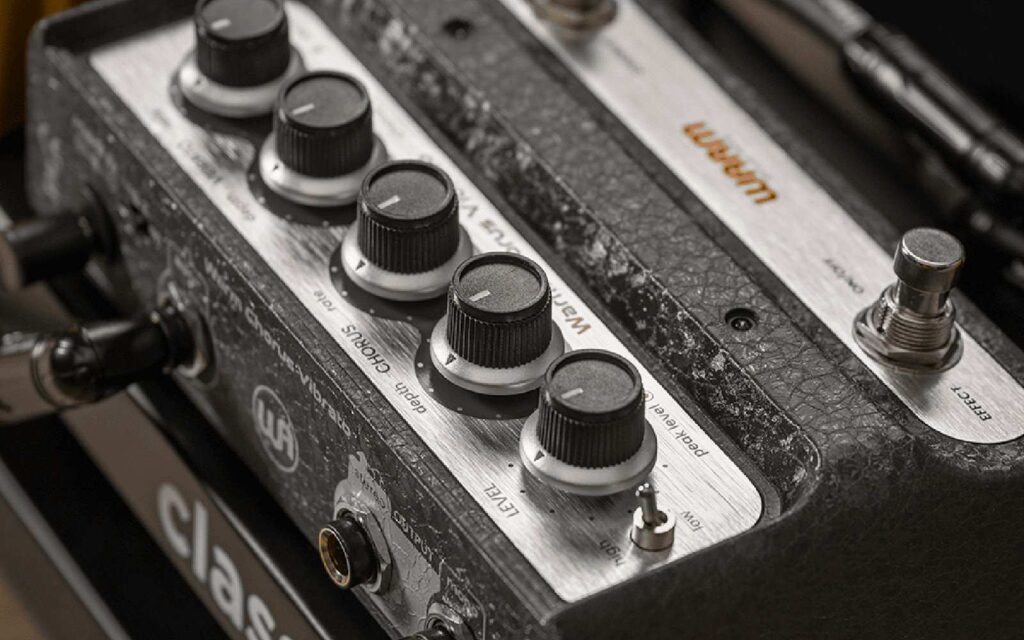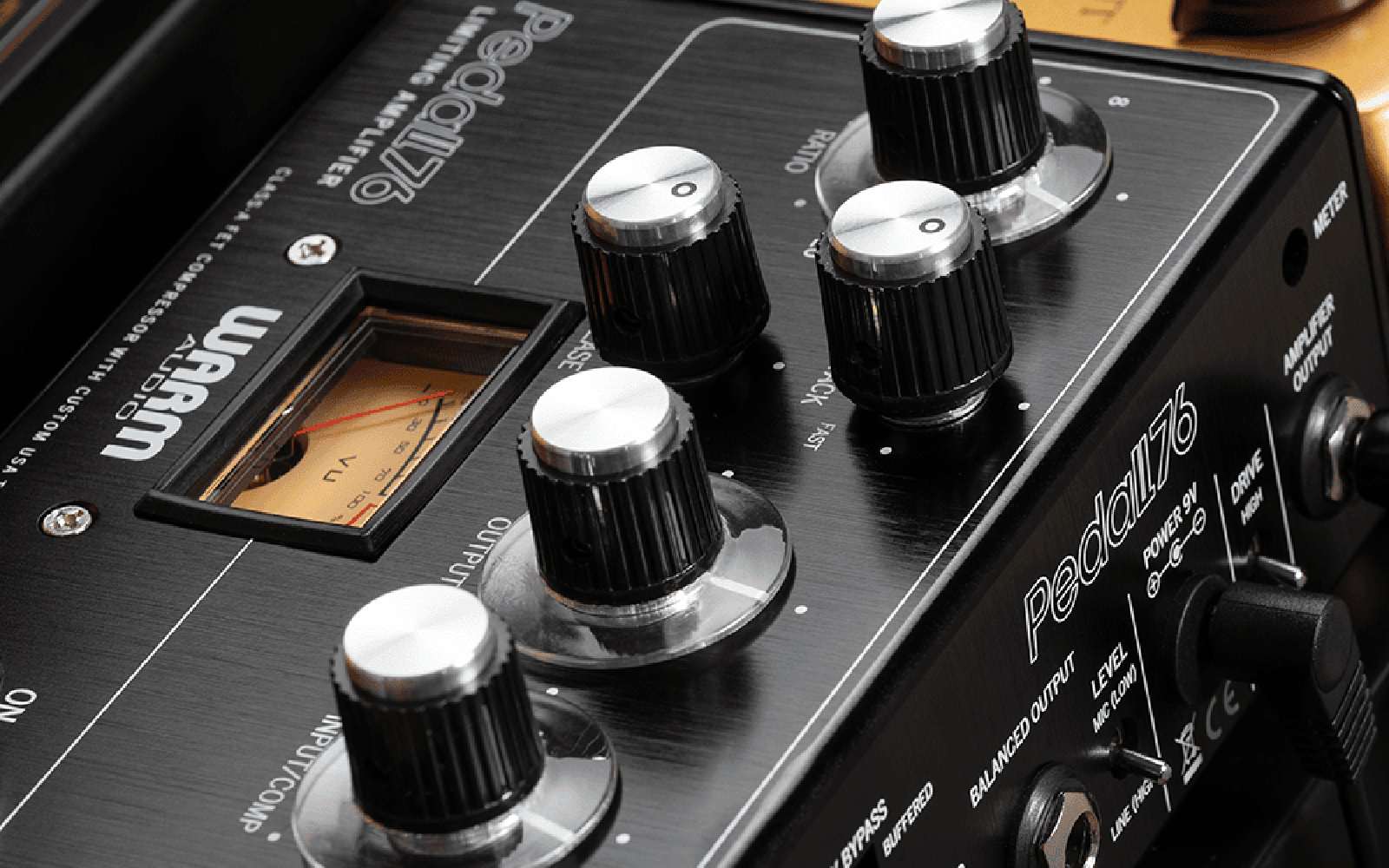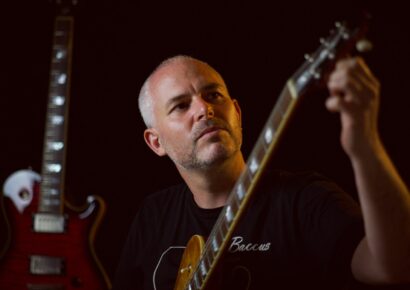Warm Audio is a brand rooted firmly in the ‘analog sounds better’ camp.
The Warm Audio mission is not only to make analog gear of a quality that rivals even the most legendary brands and models, but more importantly, to put that gear within reach of people like me: people who have been playing the guitar for 20 years and have never even attempted to make their own full spec honest-to-god pedal board with all the bells and whistles. I can barely get my head around what a compressor does, let alone take a stab in the dark at which brands or models will colour my tone the way I want. The only way I can confidently decide whether any piece of gear is worth adding to my rig is to hear how it sounds. After a week of jamming with Warm Audio’s WA-C1 chorus/vibrato pedal and Pedal76, an all-analog, transformer-balanced FET compressor pedal, I am a convert. Analog does sound better. And these pedals are an ideal start to any pedalboard journey.
Read up on all the latest features and columns here.

WA-C1 Chorus/Vibrato
The Warm Audio WA-C1 is built like a brick-sized tank. Opening the box, your eye is immediately drawn to the reptile-skin textured, army-green metal casing and the aluminium plates beneath the controls. The controls are so clearly labelled I’m confident I could train my dog to use it. Across the top you’ve got a switch that toggles the input sensitivity. High mode gives a boost before the built-in analog preamp, clipping the signal and driving a bit of harmonic distortion earlier. Moving along, you’ve got your Level dial, followed by two sets of depth and rate dials for the chorus and vibrato functions respectively. Beneath the “LEVEL” dial is a “peak level“ LED which lights up when the signal starts to clip. Along the bottom you’ve got two foot switches: a bypass toggle and a “chorus / vibrato” toggle. Two LEDs sit above the function toggle footswitch, indicating which function you’ve got selected: the chorus LED being red and vibrato blue. These LEDs pulse in accordance with the corresponding “rate” dial position. Along the back of the pedal is your 9V input, a switch labelled “HI-Z” which changes between vintage 50k Ohm impedance and a 1.1m Hi-Z setting which, according to the incredibly helpful user manual, benefits passive instruments. Then you’ve got one ¼” input, and two outputs for mono and stereo out. That’s it. Dead simple. Personally, chorus is one of my favourite effects to mess around with.
There’s so much nostalgia you can get out of a good chorus, and paired with the rich colour you get from the analog pre-amp in this pedal, I was transported back to a time when everything was cosy and chill. Flipping up the sensitivity switch gave me an extremely satisfying growl, thickening up the low-mids and coating the whole sound in a thick layer of chewy taffy. I found the vibrato to be more subtle until you dialled the depth up past halfway, which added a really nice layering effect reminiscent of a flanger, a phaser or a chorus. The rate goes all the way up to hummingbird-wing speed and I recommend not staring at the LED for too long in this mode.
Pedal76
The Pedal76 is much less military in its construction: a simple, sleek black box with silver knobs and the cutest, most demure miniature analog VU peak metre I’ve ever seen. A lightbulb flickers on in my brain when I recognise the number 76 in the context of compression. I become that meme of Leo DiCaprio pointing at the TV… but I don’t know what I’m pointing at or why it’s caught my attention, I just know it’s something important in the content of compression! Nevertheless, I know it’s important. The task that now befalls me is to figure out why. Lo and behold, the kind folks at Warm Audio have made this task infinitely easier by providing (both in the manual and on their website) a handful of diagrams showing the ideal settings required to achieve a variety of sounds. For example, if I was in the market for a “funky-munks” kind of compression I’d want my ratio sitting at 10, fast attack, medium release, and my output and input/compression at about halfway. Aside from those controls and a bypass footswitch, that’s about all this bad boy needs to do its business. Until, that is, you stand it on its nose and take a peek at the back panel. Now here’s where the Pedal76 proves its worth as a tool for both gigging and recording. You’ve got balanced and unbalanced ¼” inputs, amp output, an FX bypass that switches between true and buffered bypass, input sensitivity controls, ground/lift, pad engagement, and two drive modes (high or low).
My favourite setting was a ratio of 12, fast attack and max speed release, input at half way and output/comp at about 9 o’clock. My tone felt ballsier thanks to a smooth mid boost. My pick attack felt more pronounced. The high-mids were clearer. My chords were more sustained and articulate. My palm mutes felt more punchy. With the bypass on, I was just sitting in my room playing the guitar. But when the Pedal76 was engaged, I was in a renowned studio somewhere in L.A., laying down the tracks for what would be the next Best-Produced Album of the Year. I still can’t explain exactly what this thing does, but I might just go out and grab one so I can invest some time in learning.
The two newest offerings from Warm Audio are expertly crafted and meticulously specced. They are simple, fun, accessible, unpretentious ways to enhance your sound. I think I might start building that road case pedalboard I’ve always wanted. What a place to start.
For local Warm Audio enquiries, visit Studio Connections.

